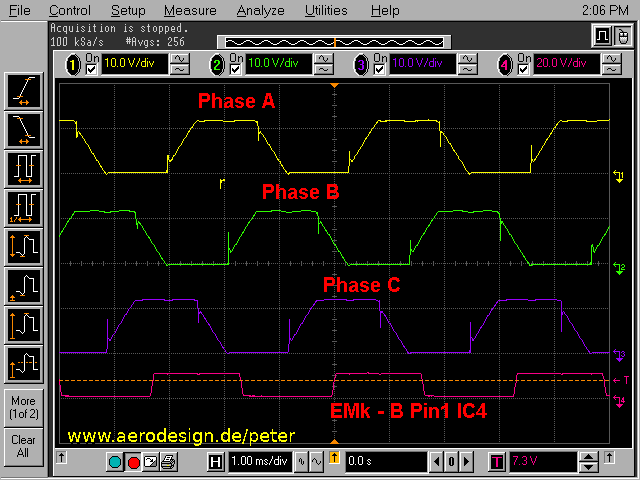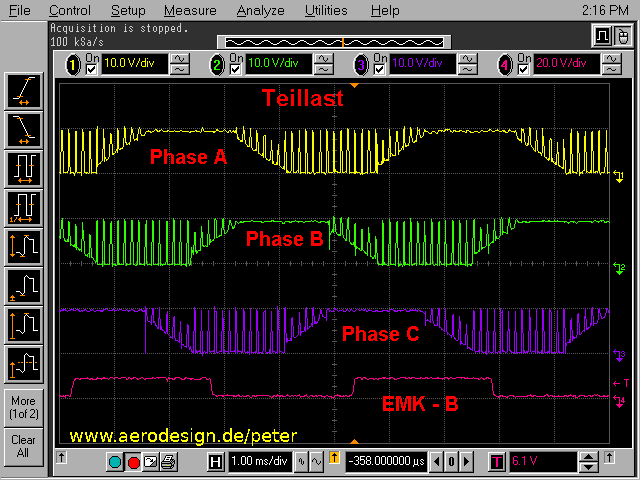|
|
|
|
|
|
|
The motors are PM BLDC motors, Permanent Magnet Brushless DC.
Outrunners are inrunners turned inside out, no electrical difference between the two. See also these brushless motor animations and simulations - RCG A brushless motor is a brushed motor with electronic switching (the ESC) instead of mechanical switching (commutator+brushes). A brushless motor+ESC behaves the same as a brushed motor, same formulas for rpm, current and power drawn apply. A motor acts at the same time as a generator, the controller uses the generated voltages to determine when to switch/commutate. The motor is the boss, ESC frequency follows motor rpm. The threemotor/ESC wires are equivalent, but not identical. They carry the same power signal albeit with a 120degree phase ('time') difference. The colours are a handy reminder/help. You can connect them anyway you want. If motor runs in the wrong direction, just swap any two of the three motorwires. NEVER EVER swap battery wires, reverse batery polarity will ruin you controller, bigly, in the blink of an eye  Different colours for motorwire are handy for remembering theESC→ motor connections. The ESC modulates the voltage going to the motor windings in proportion to the stick value. Explanation Pulse-width modulation (wikipedia) Power signals at full throttle, no chopping up voltage in pieces. Trapezoid commutation.  Power signals at partial throttle, PWM chopping ('grass') to reduce effective voltage.  Scope traces from www.aerodesign.de/peter, DIY brushless motor building (english&german) |
|
|
|
|
|
It's all about what the motor wants to do versus what the motor can do.
Kv says nothing about power and torque. Kv matches rpm and voltage, nothing more. Kv and voltage determine how fast motor wants to run.
Prettig weekend  Ron Ron• Without a watt-meter you are in the dark ... until something starts to glow • • e-flight calculators • watt-meters • diy motor tips&tricks • Cumulus MFC • |
|
|
|
|
|
General rules for current and power, they give a relative indication:
Motorcurrent is proportional to pitch¹, voltage², Kv³ and diameter⁴. Power-drawn is proportional to pitch¹, voltage³, Kv³ and diameter⁴. Voltage effect without the exponentiation extra current with one or two cells added, simple table Therefore, changes in setup (and lousy Kv specifications!) can have surprisingly huge effects. E.g. doubling voltage will four(2²)fold current, doubling Kv will eight(2³)fold current, and doubling prop diameter will sixteen(2⁴)fold current. Even a small 10% change/difference in Kv will already lead to a 30% difference in current. Always check/measure current in a changed/new setup. Vriendelijke groeten  Ron Ron• Without a watt-meter you are in the dark ... until something starts to glow • • e-flight calculators • watt-meters • diy motor tips&tricks • Cumulus MFC • |
«
Previous Thread
|
Next Thread
»
| Currently Active Users Viewing This Thread: 1 (0 members and 1 guests) | |
| Thread Tools | |




